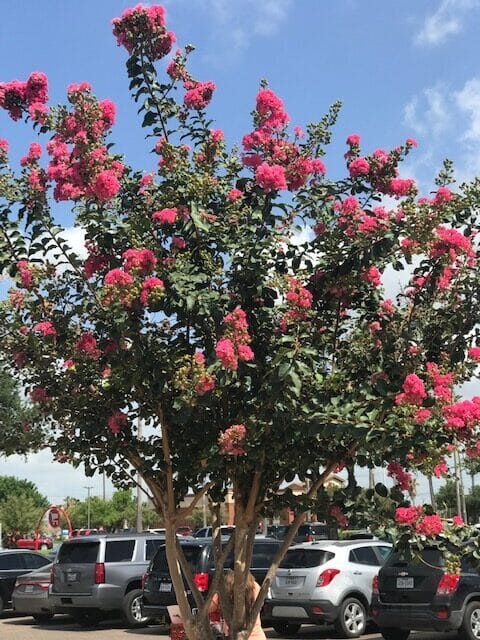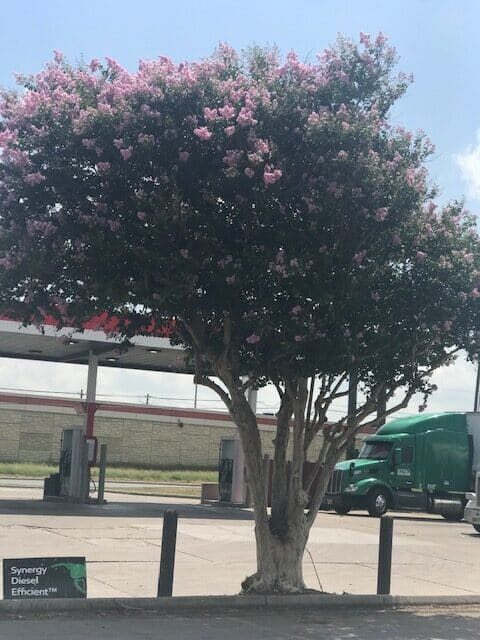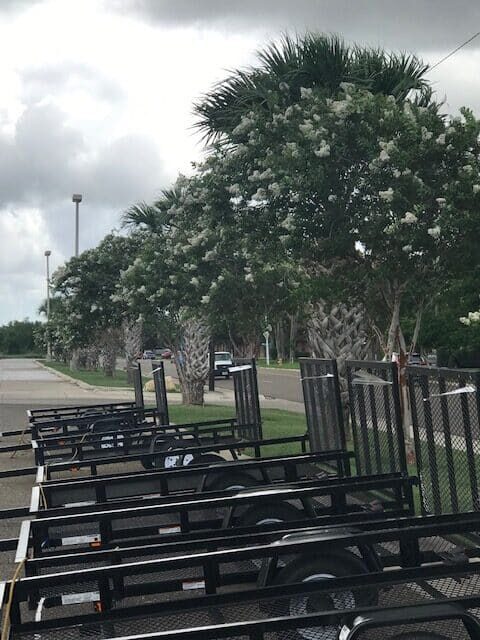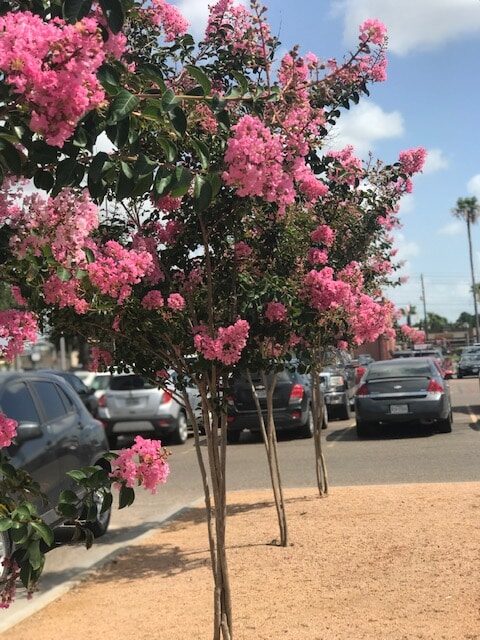
By Lori Murray | Cameron County Master Gardener, Texas Superstar Specialist
You have probably noticed, as I have, that the crape myrtle around Harlingen have never been more beautiful than they are this year. Take a drive downtown on Jackson Street and turn left on Third to enter l bower of fluffy pink, or look out your window in any of a number of areas around town and you’ll be nearly overwhelmed by swaying branches of prolific blooms.
Turn right on Camelot from the frontage road at Lowe’s and head toward Business 77; on your left you’ll see a line of gorgeous white crape myrtles lining Camelot Drive. Continue to Luby’s and see the potential of the trees on your right just on the edge of bursting into full bloom.

Even Home Depot sports a line of beautiful pink blooms at it’s gas pumps. While I’ve never been a big fan of the crape myrtle in the past, thinking it better suited to the more acidic soil of Houston than to our Valley alkali, this year I’m finding myself longing for just one beautiful flower-bearer in my yard – maybe one of those with the deep green leaves and gorgeous pink flowers like I’ve seen in the Target parking lot.
Although it is native to Asia, the crape myrtle has long been associated with the American South. It has been tagged with a variety of spellings, including “crepe myrtle” “and “crapemyrtle,” but however it is spelled few plants can match its combination of spectacular summer flowers, colorful autumn foliage, and handsome ornamental trunks.
It varies in size from dwarf selections that grow less than 3’ tall and can be grown in a pot to several types that reach upwards of 30’ in height, so it is important to match the plant you select not only to the right color but also to the right size and the look you want to achieve.
The plant can stand alone as a focal point, in one of a pair to accent your front door, or in a group or hedge for a concentration of dense foliage and flowers. If nothing else, planting the proper size for the site will save you both heartache and backache in the future.

The larger types will need room to grow without bothering your house, walkways, or power lines. Medium size plants that will grow from 12–15’ are perfect for a courtyard or garden home. Dwarf selections look great in large containers, foundation plantings or even in beds.
Remember that the crape myrtle loves sun although it will tolerate a little bit of shade during our hot summer temperatures. More sun equals more flowers and flowers bloom on new growth so it is important to do any pruning very early in the spring before the plant begins to put on new shoots, or to relegate your pruning to weak, spindly growth.
Of course, you can prune off dead, diseased, or broken branches anytime.
Crape myrtles grow best in reasonably good soil with a pH of 5.0- 6.5 and good drainage. They are adapted to poor soil and don’t need much fertilizer, although a light application of 5-10-5 in spring when growth begins is beneficial to older plants.
We can plant them at any time of the year here, and they should be given a good soaking before and after planting and during dry periods for the first two seasons.
After the plants are well established, avoid excessive watering and fertilization to prevent rank vegetative growth at the expense of flowering. If our climate goes back into a drought, you’ll want to provide about an inch a week (“Crape Myrtles are tough plants – don’t kill them with kindness!”).

Before planting a new crape myrtle, amend the soil with organic material such as compost, which boosts its fertility.
Also, adding peat moss or expanded shale can help improve drainage in clay soils while also adding nutrients. Make the hole bigger around than the plant ball, but no deeper (so that the base of the plant is even with the ground in which it is planted).
Pat the soil firmly to push out any air bubbles, but don’t pack it in too tightly.
After planting a young specimen, sprinkle about 1 teaspoon of granular fertilizer into the soil at the perimeter of the planting hole (or you could dilute it in water and pour it into the hole). Any granular fertilizer high in nitrogen can give the plant a boost.
Each spring, apply a layer of compost under the tree, spreading it out to the dripline. Add a 2-inch layer of mulch to retain moisture and control weeds, keeping mulch a few inches away from the tree trunk.
Next week: More about the crape myrtle, some information about pruning, and an online source to help you make your selection.



